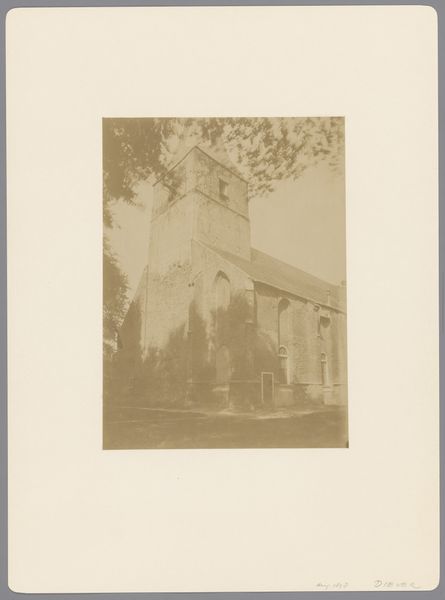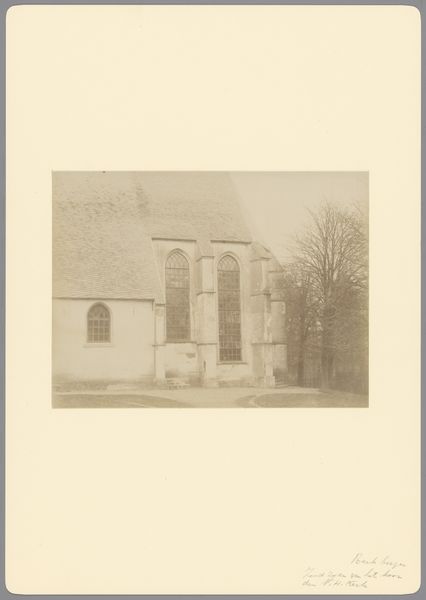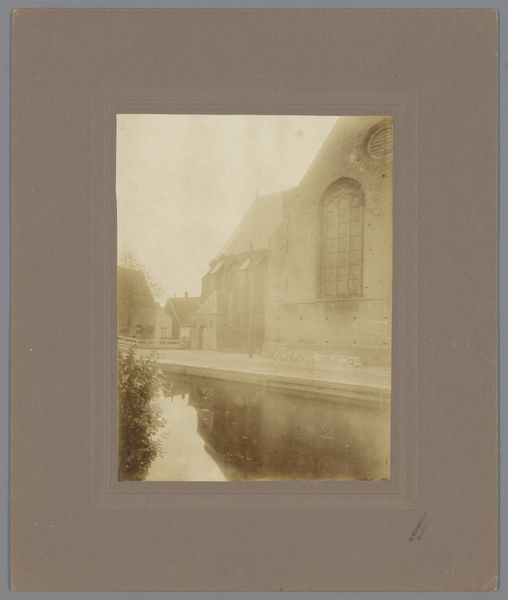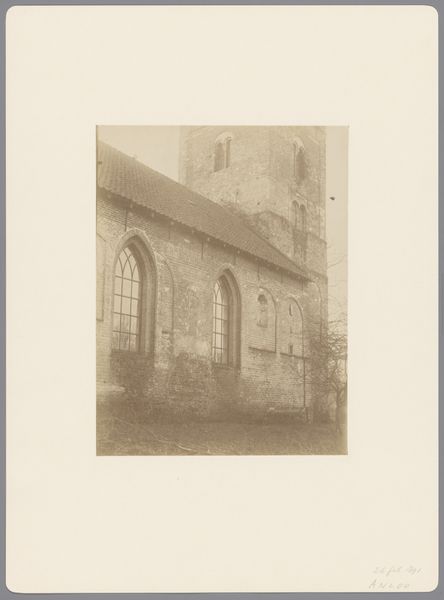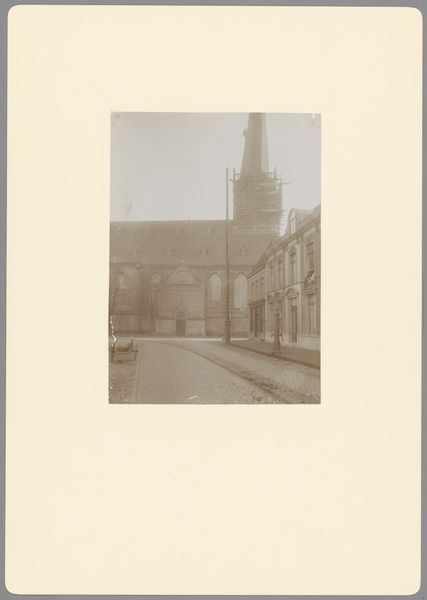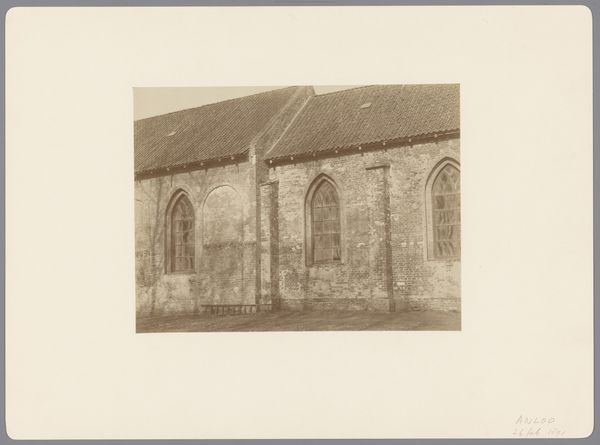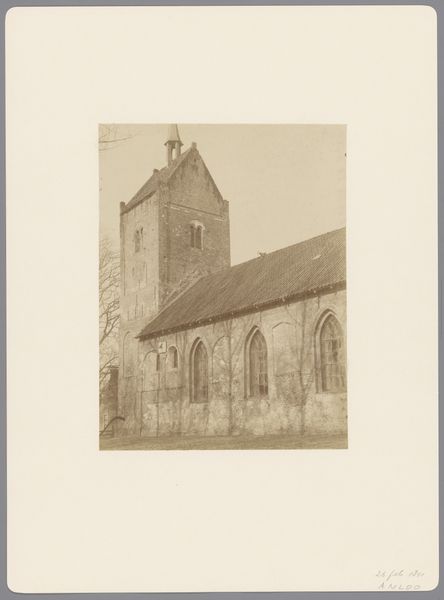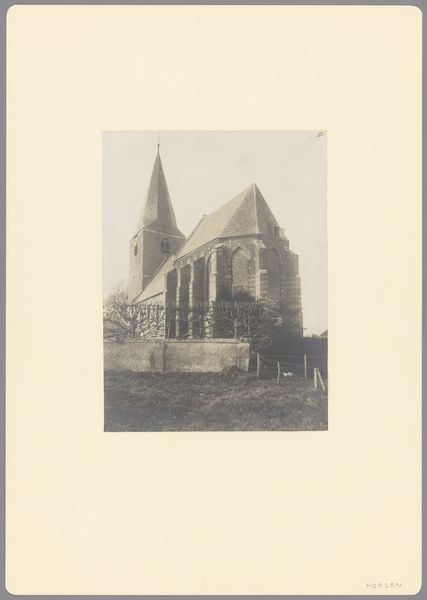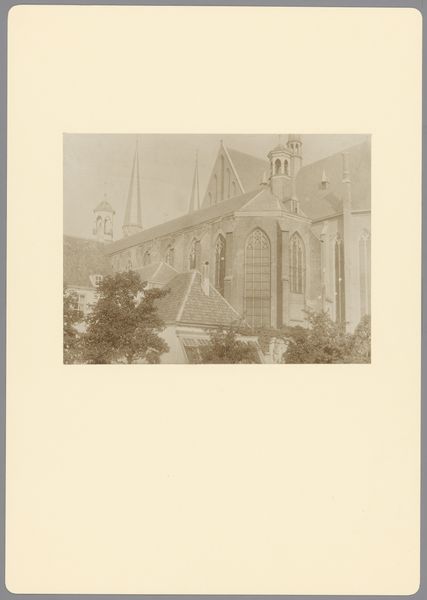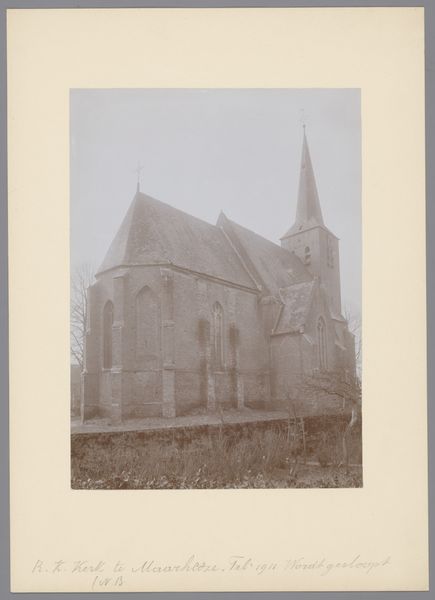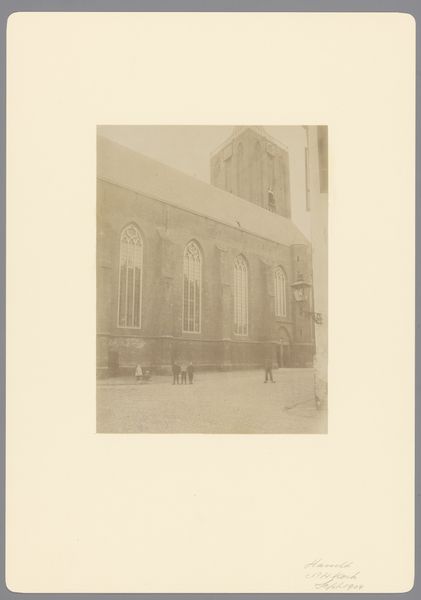
photography, site-specific, albumen-print
#
photography
#
site-specific
#
cityscape
#
albumen-print
Dimensions: height 227 mm, width 167 mm, height 361 mm, width 300 mm
Copyright: Rijks Museum: Open Domain
Editor: We are looking at Leonard Vlaanderen's 1923 photograph, "Aanzicht op Nederlands Hervormde Kerk in De Rijp, Noord-Holland," made using the albumen print process. It's a simple cityscape, quite muted. What's interesting to you about it? Curator: The albumen print process is central here. Notice the surface quality, how the image appears embedded *within* the paper itself. This wasn't simply about capturing a likeness. Vlaanderen chose albumen printing, a laborious process involving coating paper with egg whites, for specific aesthetic and archival qualities. Why? What did this choice communicate about the subject? Editor: So it wasn't just about documenting the church; the material choice itself holds meaning? Was the church particularly important in the social fabric of this Dutch city at the time? Curator: Precisely. Think about the effort involved in creating an albumen print versus, say, a quicker developing-out paper. The permanence and craft associated with albumen printing elevate the subject. This specific church, documented through considerable labor and expensive materials. We also consider the role of photography at that time - where these architectural photographies viewed as "high art" or mere utilitarian reproductions? Editor: So, was the church, therefore, something like a symbol of stability being sold to, and consumed by, the upper class? Was it essentially architectural propaganda through photography? Curator: "Propaganda" is perhaps too strong. But you're touching on a crucial point. The photograph isn't simply a neutral record. The means of production—the choice of materials, the time invested—contributes to the meaning. Who commissioned and consumed images like these? That's a piece of this material puzzle. Editor: This makes me think of the effort to capture the importance and stability, even permanence, of that church at that moment, while considering its commercial context. Fascinating how the choice of photographic printmaking reveals so much! Curator: Exactly! Now we understand what we can learn about history just from considering material components.
Comments
No comments
Be the first to comment and join the conversation on the ultimate creative platform.
